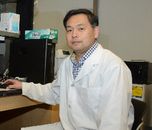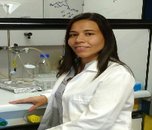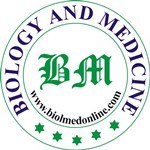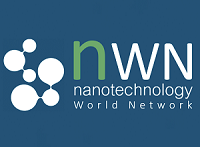Theme: Investigating the Modern Innovations in the field of Glycobiology
Glycobiology 2021
The 11th World Glycobiology Congress Webinar Conference will be held on May 17-18, 2021. Glycobiology 2021 will lay a idle platform for scientists, researchers, Industry experts, world-class professors and glycobiologists to discuss an approach for glycobiology and its related research areas. International Glycobiology Conferences is designed to provide diverse and current education that will keep glycobiology professionals alongside of the issues related to research and development. The conference will impact an attractive moment to interact with professionals in the research field and therefore it takes a delight in opening a gate to meet young researchers and potential speakers where they can demonstrate their novel research and contributions in the field of glycobiology and glycomedicine.
Theme:Essentials of Glycobiology: Understanding Glycans in COVID-19 Drug Design
Glycobiology 2021 Conference will be an investigation of New research Innovation of Glycobiology and spread the most recent advancements and patterns in the field of Glycobiology and Glycochemistry, Proteomics, Systems Biology, Genomics, Precision Medicine, Lipidomics, Metabolomics, Bioinformatics, Genomics, Structural Biology, Neurobiology, Biochemistry and Biophysics, and many more. Glycobiology is of enthusiasm to researchers in light of the fact that it might prompt enhancements in the field of research development and its allied technologies. Glycobiology as an order makes utilization of systematic procedures, for example Mass spectroscopy, chromatography, and protein structure prediction etc. Glycobiology permits researchers to gauge physiological impacts and to screen for unfavorable responses to tranquilizes.
Young Scientist Benefits
- Our conferences provide best Platform for your research through oral presentations.
- Share the ideas with both eminent researchers and mentors.
- Young Scientist Award reorganization certificate and memento to the winners
- Young Scientists will get appropriate and timely information by this Forum.
- Platform for collaboration among young researchers for better development
- Award should motivate participants to strive to realize their full potential which could in turn be beneficial to the field as whole.
Deadline for Registrations:
Speaker Registration €249
Delegate Registration €299
Glycobiology 2021 organizing Committee invites all the contestants across the globe to attend the 11th World Glycobiology Congress during May 17-18, 2021.
Glycobiology 2021 is designed to meet all prominent and well-known speakers from all around the globe with delegates, exhibitors, industry experts, work shop symposiums and student delegates from glycobiology and healthcare divisions to be a part of it.
Scientific Sessions:
Track: 1 Glycosience
Glycoscience contributes in three important ways focusing on Understanding of Human health and diseases, searching for alternative sources of energy and innovating new materials. The glycoscience knowledge will be embedded in efforts to address fundamental challenges in health and sustainability.
Glycoscience deals with human health because this has been a main focus of efforts in the field of glycoscience and glycomics, mostly in the United States. Actually many scientists automatically think of health when they think of glycans and their functions. Other researchers clearly study carbohydrates and their uses (e.g., in polymer engineering), the terminology and techniques used by these fields may differ. As a consequence, the scientific community may not immediately think of the entirety of glycan research as part of a unified field of glycoscience.
- Glycoprofiling
- Glycoproteins
- Glycosylation
- Therapeutic proteins
- Glycosaminoglycans
- Microbial glycobiology
- Glyconutrients
Related Associations:
Glyconet Glycobiotechnology Network | Glycoscience Graduate School | Mizutani Foundation for Glycoscience | The Japanese Society of Carbohydrate Research | Alberta Glycomics Centre | Copenhagen Center for Glycomics
Track: 2 Glycobiology
It contains the study of everything related to the structure, bio-synthesis, and biology of sugars and saccharides drawing from simple organic chemistry, molecular and cellular biology, enzymology and related domains. Like amino acids and nucleic acids, sugars are the major contributors in nature many natural products contain oligosaccharides that are important for their biological and biochemical activity and carbohydrates have major roles in a wider range of biological processes including signal transduction mechanisms and immune responses. So the study of glycan structures is also complicated by the lack of a proper and direct template for their biosynthesis, contrary to the case with amino acids and proteins.
- Glycan linkage
- Glycosidic bond
- Glycoprotein diversity
- Proteoglycans
- N-linked glycosylation
Related Associations:
Glyconet Glycobiotechnology Network | Glycoscience Graduate School | Mizutani Foundation for Glycoscience | The Japanese Society of Carbohydrate Research | Alberta Glycomics Centre | Copenhagen Center for Glycomics | Resource for Integrated Glycotechnology | Institute of Molecular Biomembrane and Glycobiology
Track: 3 Biochemistry
Biochemistry is a sub-disciple of both biology and chemistry it is divided into three fields as Molecular Genetics, Protein biology and Metabolism. From the last ten decades of the 20th Century, biochemistry has three disciplines become successful at explaining living process. Biochemistry concentrates on accepting how biological molecules give rise to the procedures that occur within living cells and between cells, which in shot recounts greatly to the study and understanding of tissues, organs, and organism structure and function.
- Host pathogen interactions
- Glycan based immunotherapy
- Glycomimetics
- Synthesis of glycan antigens
- Glycoconjugate vaccines
Related Associations:
Laboratory of Carbohydrate Chemistry, Institute of Bioorganic Chemistry | Russian Academy of Science | Glycoprotein Structure/Function Group, Birkbeck College | Oxford Glycobiology Institute | Centre for Glycobiology, University of Liverpool | IBS: Instituted Biology Structural | Glycoscience Team, National Centre for Biomedical Engineering Science, National University of Ireland, Galway | Glycosciences Laboratory
Track 4: Glycan’s
Glycans can be initiate attached to proteins as in glycoproteins and proteoglycans. In general, they are found on the external surface of cells. O- and N-linked glycans are right collective in eukaryotes but may similarly found, although less commonly, in prokaryotes. Glycan classifications cannot be well-defined by a simple linear one-letter code as every duplet of monosaccharide’s can be associate in various ways and tributary structures can be designed. Few of the bioinformatics algorithms established for genomics or proteomics can be straightly adapted for glycomics. The progress of algorithms, which allow a rapid, automatic interpretation of mass spectra to recognise glycan structures, is at this time the most active field of research.
- Glycan immunotherapies
- Glycan sensing
- Glycosamino Glycans
- Gene expression profiling
- Glycan synthesis
Related Associations:
National University of Ireland, Galway | Glycosciences Laboratory |Oxford Glycobiology Institute | Glycobiology Group | Glycotechnology Core Resource | Glycobiology Research and Training Center | Glycomics CenterHeparin Home Page, Rensselaer Polytechnic Institute
Track: 5 Synthesis and Biological Role of Glycans
The biological parts of glycans can be separated into two wide categories. The structural and modulatory properties of glycans and the specific recognition of glycans by other molecules. Most commonly, glycan-binding proteins (GBPs). The biological consequences of varying glycosylation in several schemes seem to be extremely adjustable and unpredictable. A specified glycan can have diverse roles in altered tissues or at different times in development (organism-intrinsic functions) or in dissimilar environmental contexts (organism-extrinsic functions). Methods taken to know the biological parts of glycans contain the prevention of early glycosylation, prevention of glycan chain elongation, alteration of glycan processing, enzymatic or chemical deglycosylation of completed chains, genetic elimination of glycosylation sites, and the education of certainly happening genetic variants and mutants in glycosylation. Glycosylation mainly mentions in exact to the enzymatic procedure that attributes glycans to proteins, lipids, or other organic molecules. This enzymatic method produces one of the fundamental biopolymers found in cells (along with DNA, RNA, and proteins). Glycosylation also displays a role in cell-cell adhesion (a apparatus employed by cells of the immune system) via sugar-binding proteins called lectins, which identify exact carbohydrate moieties.
- Glycoconjugates
- Carbohydrate Synthesis
- Glyconutrients
Related Associations:
Laboratory of Carbohydrate Chemistry, Institute of Bioorganic Chemistry | Russian Academy of Science | Glycoprotein Structure/Function Group, Birkbeck College | Oxford Glycobiology Institute | Centre for Glycobiology, University of Liverpool | IBS: Instituted Biology Structural | Glycoscience Team, National Centre for Biomedical Engineering Science, National University of Ireland, Galway | Glycosciences Laboratory
Track: 6 Evolution of Glycan Diversity
Glycans are saccharides that can be involved to a widespread variation of biological molecules through an enzymatic course called glycosylation to augment their purpose. Of the four essential building blocks of life, proteins, carbohydrates (glycans), lipids and nucleic acids, glycans have expected the smallest consideration from scientists. Glycans are found in archaea, bacteria and eukaryotes, and their various functions contribute to physical and physical integrity, extracellular matrix formation, signal transduction, protein compact and data interchange amongst cells (and pathogens). Glycans are the chief molecule on the cell surface and attend as the first point of connection between a cell and other cells, the extracellular matrix and pathogens. The amplified evolutionary pressure of being at the front lines of cellular collaboration and conflict most likely led to the diversification of glycans. Glyco-epitope diversity enriches the role of glycans in the group of debilitating and life-shortening disorders known as congenital muscular dystrophy, or CMD. Together membrane proteins and the ECM are highly glycosylated, and O-glycans are important for proper ECM function and communication between cells and the ECM. Numerous Glycoepitomics forms of CMD are well-known to result after dysfunctional O-glycosylation of membrane and ECM proteins; however, one-third of CMDs arise from an unknown genetic etiology.
- O-Glycans
- Glycosphingolipids
- N-Glycans
- Shared Outer Chains of Glycans
- Sialic Acids
- Glycosaminoglycans
- Glycosylphosphatidylinositol Anchors
- Nuclear and Cytoplasmic Glycans
Related Associations:
National University of Ireland, Galway | Glycosciences Laboratory |Oxford Glycobiology Institute | Glycobiology Group | Glycotechnology Core Resource | Glycobiology Research and Training Center | Glycomics CenterHeparin Home Page, Rensselaer Polytechnic Institute
Track: 7 Glycochemistry
Glycobiology along with the arena of proteomics, mainly the submission of mass spectrometry investigation to protein samples, is well-established and increasing quickly. Proteomics readings beside with glycan’s make large volumes of raw experimental records and conditional biological outcomes. To accelerate the propagation of these statistics, centralized facts storehouses have been advanced that make the data and results accessible to proteomics researchers and biologists alike. Experimental analysis of proteomics data repositories concentrates totally on freely-available, centralized data properties that disseminate or store experimental mass spectrometry data and results.
- Stereochemistry
- Regiochemistry
- Glycomimetics Chemistry
- Chemical Biology Probes
Related Associations:
Laboratory of Carbohydrate Chemistry, Institute of Bioorganic Chemistry | Russian Academy of Science | Glycoprotein Structure/Function Group, Birkbeck College | Oxford Glycobiology Institute | Centre for Glycobiology, University of Liverpool | IBS: Instituted Biology Structural | Glycoscience Team, National Centre for Biomedical Engineering Science, National University of Ireland, Galway | Glycosciences Laboratory
Track: 8 Glycans in Diseases and Therapeutics
Glycomedicine functions as essential role in cell-cell adhesion i.e. a device used by cells of the immune system through sugar-binding proteins called lectins, which classify precise carbohydrate portions. Glycans (carbohydrate oligomers) are the so-called “building blocks” of carbohydrates, nucleic acids, proteins and lipids play leading roles in various biological phenomena as well as in numerous pathophysiological procedures. Several scientists have now understood that glycosylation, i.e. the count of glycans to a protein backbone, is the most plentiful post translational alteration responses and is a major field of research and sometimes they require a glycobiology method to be exploited.
- Glycomedicine
- Transfusion medicine
- Congenital disorders of glycosylation (CDG)
- Cancer biomarkers
- Cardiovascular diseases
- Cardiac arrest
- Cancer associated coagulopathies
Related Associations:
Glycobiology Conferences | Glycobiology Meetings | Glycobiology Events | Glycobiology Conference 2019 | Glycobiology Symposium | Glycobiology Workshop | 8th Glycobiology World Congress | Glycobiology 2019 | Biochemistry Congress | Biochemistry Meetings | Glycoscience
Track: 9 Glycans in Drug Design
Glycans are elements of numerous bio-therapeutic mediators, ranging from natural products to molecules based on rational plan to recombinant glycoproteins. The glycan components of these agents can be important aspects of their biological activity and therapeutic efficacy. Biochemistry and Glycobiology includes a multidisciplinary study of carbohydrate-binding proteins (lectins), glycolipids and some selected other plant proteins that are skilful of connecting with endogenous or foreign (macro) molecules. The eminence of the research is on protein-carbohydrate interaction and their involvement in signalling procedures in plants or in plant protection. Based on the formed fundamental alertness new methods are being industrialised to shield crop plants against pests and diseases.
- Membrane biophysics
- Systems biology
- Enzyme synthesis
- Biophysical approaches to cell biology
- Computational and theoretical Biophysics
Related Associations:
Laboratory of Carbohydrate Chemistry, Institute of Bioorganic Chemistry | Russian Academy of Science | Glycoprotein Structure/Function Group, Birkbeck College | Oxford Glycobiology Institute | Centre for Glycobiology, University of Liverpool | IBS: Institut de Biologie Structurale | Glycoscience Team, National Centre for Biomedical Engineering Science, National University of Ireland, Galway | Glycosciences Laboratory
Track: 10 Glyconeurobiology
Carbohydrate rich molecules containing glycolipids, glycoproteins, and proteoglycans in the nervous system have main roles during progress, regeneration and synaptic plasticity. The structural variety of the carbohydrate moieties renders them ideally suited as stage-specific biomarkers for numerous cell types leading to mediate interactions amongst recognition molecules, thereby contributing to the development of a composite molecular framework at the cell surface and in the extracellular matrix of the cell. The excellent structural diversity of glycan chains and associated moieties allows for immense progressive opportunities that can leads to cell interactions alongside with cell matrix interactions.
- Neurological disorders
- Neurogenetics
- Alzheimer disease
- Neurosurgery
- Neuropathology
- Neurotoxicology
- Vascular dementia
Related Associations:
National University of Ireland, Galway | Glycosciences Laboratory |Oxford Glycobiology Institute | Glycobiology Group | Glycotechnology Core Resource | Glycobiology Research and Training Center | Glycomics CenterHeparin Home Page, Rensselaer Polytechnic Institute
Track: 11 Glycopathology
Carbohydrates are fundamentally considered as main bases of structural materials and energy for living creatures. Modern investigation’s in this zone has concentrated mostly on modest basic sugars and homopolysaccharides such as, starch, cellulose, glycogen, and chitin. During the last few decades, the academics have lifted their attention on composite systems like carbohydrates, especially proteoglycans, glycolipids and glycoproteins which are together mentioned to as glycoconjugates that displays the prospective of recognition markers in the biological system which also relates to other biomedical and clinical fields. The roles of glycans and glycoconjgates in cancer have been emphasizes, because a small modifications in glycosylation can tremendously regulate the complete pathway and mechanisms of cancer, which indicates to an indication as a biomarker growth leading to several therapeutics development in cancer research.
- Cancer epidemiology
- Cancer metastasis
- Cancer biomarkers
- Tumorigenesis
- Cancer therapeutics
- Cancer biopsy
Related Associations:
Oxford Glycobiology Institute | Centre for Glycobiology, University of Liverpool | IBS: Instituted Biology Structural | Glycoscience Team, National Centre for Biomedical Engineering Science, National University of Ireland, Galway | Glycosciences Laboratory
Track: 12 Glycoimmunology
There are three crucial investigation themes being examined by the Glycoimmunology group: carbohydrate immunochemistry and vaccine design, carbohydrate-based inhibitor synthesis, and carbohydrate immunology. Particular projects concentrates on immune directing of cancer cells via the bioengineering of their surface sialic acid; the controller of cancer metastasis via the operation and targeting of tumor external carbohydrate; physical and immunochemical mapping of defensive salivated epitopes and carbohydrate-based disease altering methods for Several Sclerosis
- Transfusion medicine
- Glycomedicine
- Cardiac arrest
- Cancer associated coagulopathies
- Cardiovascular diseases
Related Associations:
Russian Academy of Science | Glycoprotein Structure/Function Group, Birkbeck College | Oxford Glycobiology Institute | Centre for Glycobiology, University of Liverpool | IBS: Instituted Biology Structural | Glycoscience Team, National Centre for Biomedical Engineering Science, National University of Ireland, Galway | Glycosciences Laboratory
Track: 13 Glycoinformatics
Presently Glycoinformatics is a new branch of bioinformatics that deals with the education of carbohydrates. It generally contains database, software, and algorithm progress for the study of carbohydrate structures, glycoconjugates, enzymatic carbohydrate creation and degradation, as well as carbohydrate collaborations. Original practice of the duration does not currently include the treatment of carbohydrates from the more well-known nutritive aspect.
- 3D structure determination
- Protein folding
- Protein engineering
- Protein Modeling
- Mass spectroscopy
- Homology modeling
Related Associations:
| Glycosciences Laboratory | Oxford Glycobiology Institute | Glycobiology Group | Glycotechnology Core Resource | Glycobiology Research and Training Center | Glycomics CenterHeparin Home Page, Rensselaer Polytechnic Institute | Laboratory of Carbohydrate Chemistry, Institute of Bioorganic Chemistry | Russian Academy of Science |
Track: 14 Proteoglycan and Sialic acid
Proteoglycans are more than 95% carbohydrate by weight. Proteoglycan supports to offer us with the knowledge to the molecule's several chemical compositions. As proteo mentions to protein, while glycan signifies sugar or a group of sugars, so proteoglycan is a long polysaccharide chain covalently committed to a protein. The protein element of proteoglycans is manufactured by ribosomes and mostly translocated into the lumen of the rough endoplasmic reticulum. Sialic acid is a generic term for the N- or O-substituted derivatives of neuraminic acid, a monosaccharide with a nine-carbon backbone and are found widely distributed in animal tissues and to a lesser level in some additional organisms, ranging from fungi, plants, yeasts and bacteria, mostly in glycoproteins and gangliosides.
- Protein engineering
- Protein Modeling
- Homology modelling
Related Associations:
Laboratory of Carbohydrate Chemistry, Institute of Bioorganic Chemistry | Russian Academy of Science | Glycoprotein Structure/Function Group, Birkbeck College | Oxford Glycobiology Institute | Centre for Glycobiology, University of Liverpool | IBS: Instituted Biology Structural | Glycoscience Team, National Centre for Biomedical Engineering Science, National University of Ireland, Galway | Glycosciences Laboratory
Track: 15 Genomics and Metabolomics
Genomics is the study of the genome in contrast to genetics which mentions to the study of genes and their roles in inheritance. Genomics can be considered a discipline in genetics. It applies recombinant DNA, DNA sequencing methods and bioinformatics tools to sequence, assemble and analyse the function and structure of genomes with the complete set of DNA within a single cell of an organism. Advances in genomics have stimulated a transformation in discovery-based research to know even the most complex biological systems such as the brain. The field contains efforts to govern the whole DNA arrangement of organisms and fine-scale genetic mapping.
- Applications of mass spectrometry
- Signal splitting: spin-spin coupling
- Tandem mass spectrometry (MS/MS)
- Nuclear spin
- Mass spectrometry for protein analysis
- Emerging separation technologies
Related Associations:
Laboratory of Carbohydrate Chemistry, Institute of Bioorganic Chemistry | Russian Academy of Science | Glycoprotein Structure/Function Group, Birkbeck College | Oxford Glycobiology Institute | Centre for Glycobiology, University of Liverpool | IBS: Instituted Biology Structural | Glycoscience Team, National Centre for Biomedical Engineering Science, National University of Ireland, Galway | Glycosciences Laboratory
Track: 16 Glycolipids and Glycopeptides
Glycolipids are narrow in elements but well-known to be main and vital suppliers of glycoconjugates in all zones of life. The physical diversity of glycolipids is exceptional, as dissimilar types of lipids are glycosylated in nearly every systems of life like animals, plants, and bacteria. Their fundamental role is to continue constancy of the membrane and to enable other cellular recognition. They act as glycan-carriers in the membranes of photosynthetic structures in, algae, plants and bacteria.
Glycopeptides are principally peptides that comprise carbohydrate moieties normally glycan’s which are covalently attached to the side chains of the amino acid residues that constitute the peptide. These comprise a course of drugs of microbial origin that are collected of glycosylated cyclic or polycyclic non ribosomal peptides.
- Protein folding
- Protein profiling
- Expression proteomics
- G-protein-coupled receptor
- Molecular and cellular proteomics
- Quantitative proteomics
- Post-translational modifications
Related Associations:
National University of Ireland, Galway | Glycosciences Laboratory |Oxford Glycobiology Institute | Glycobiology Group | Glycotechnology Core Resource | Glycobiology Research and Training Center | Glycomics CenterHeparin Home Page, Rensselaer Polytechnic Institute
Track: 17 Recent Advances in Glycobiology
Mostly glycans are important elements of numerous bio therapeutic agents, conflicting from natural products to molecules based on various rational designs to recombinant glycoproteins and glycoconjugates. The glycan components of these agents can be important essentials of their biological activity and therapeutic ability. Recent patenting of novel therapeutics typically requires elucidations of the arrangement of matter in the claimed molecule for approval. Various dominant growths can be seen in the areas of imaging, structure prediction technologies and advancement of hybrid procedures to identify the structure and role of carbohydrates and proteins.
- Cancer stem cells
- Tissue regeneration
- Somatic cell therapy
- Bone marrow transplantation
- Stem cell biomarkers
- Stem cell technologies
Related Associations:
Laboratory of Carbohydrate Chemistry, Institute of Bioorganic Chemistry | Russian Academy of Science | Glycoprotein Structure/Function Group, Birkbeck College | Oxford Glycobiology Institute | Centre for Glycobiology, University of Liverpool | IBS: Instituted Biology Structural | Glycoscience Team, National Centre for Biomedical Engineering Science, National University of Ireland, Galway | Glycosciences Laboratory.
Importance and Scope:
The professionals have predicted the Global Biochemistry Analyzers market to raise at a CAGR of 4.50 percent over the period of 2012-2016. biochemistry study shows a developmeant of about $ 3,200 Million in the year 2017 to about $ 4,700 Million by the end of 2024. 5.5% over the forecast period, with a balanced growth during the next four years and posts a CAGR of over 6% by 2021.However; the negative impact of global recession could cause a challenge to the growth of this market.
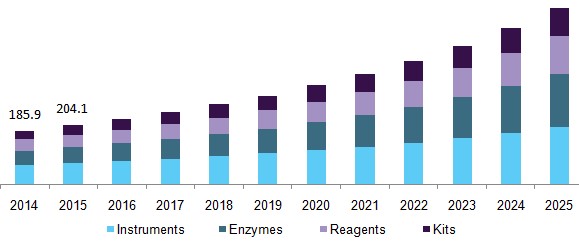
CHANCE MEETING YOUR TARGET MARKET with participants from around the globe concentrated on knowledge about Biological research and growing market, this is your only best opportunity to grasp the largest assembly of members from the scientific community. Conduct demonstrations, distribute information, meet with current and potential customers, and make a splash with a novel product line, and receive name appreciation at this 2-day event. World-renowned presenters, the newest methods, strategies, and the newest updates in Glycobiology growing market are hallmarks of this conference.
The scientific development in biochemistry and molecular biology has played an important role in the growth of the glycobiology market during the last era. Also, the enhancements in analytical tools, and documents processing, and analysis software have added considerably in the progression of the glycobiology arena. The existence of research finance and government funding for conducting research and commercialization of the products in the glycobiology market is the main driver for the development of this market. Glycobiology knowledge is used widely in biomarker innovation and drug assessment. Thus, the quick growth experienced by pharmaceutical and biotechnology businesses is supporting the development of the glycobiology market. The worldwide glycobiology market was esteemed at $512.38 million in 2014 and poised to grow at a CAGR of 12.62% between 2012 and 2019, to reach $928.11 million in 2019.
• This Glycobiology 2021 concentrating on all the key features in the fields of Glycobiology and its associated investigation.
Targeted Audience:
Students
Glycobiologists
Biochemists
Biochemistry Experts
Medical Colleges
Principal Investigators
Post-Doctoral Fellows
Students
Biomedical Research companies.
Glycobiology Researchers
Clinical Researchers
Director of Laboratories, Universities, Industries,
Workshop organizers
Molecular biologists
Genomics 2020
Conference Series llc LTD hosted 13th International Conference on Genomics & Molecular Biology during May 25-26, 2020 through Webinar based on the theme “Advances in Genome & Molecular Biology during COVID-19”.
Active participation and generous response was received from the Organizing Committee Members, scientists, researchers, as well as experts from Non-government organizations, and students from diverse groups who made this conference as one of the most successful and productive events in 2019 from Conference Series llc LTD.
The conference was marked with several workshops, multiple sessions, Keynote presentations, panel discussions and Poster sessions. We received active participation from scientists, young and brilliant researchers, business delegates and talented student communities representing more than 35 countries, who have driven this event into the path of success.
The conference was initiated with a warm welcome note by Honorable guests and the Keynote forum. The proceedings went through interactive sessions and panel discussions headed by honorable Moderator Dr. Mariom, The University of Tokyo, Japan for the conference.
The conference proceedings were carried out through various Scientific-sessions and plenary lectures, of which the following Speakers were highlighted as Keynote speakers:
CpG Islands methylation alterations in cancer: Understanding the functional role of these security locks and their use as early tumour biomarkers: Patrizia Zavattari, Cagliari University, Italy
The centers of premeltons signal the beginning and ends of genes: Henry M. Sobell, University of Rochester, USA
Rapid assembly of multi-gene pathways and combinatorial libraries with semiconductor technologies: Cedric Wu, GenScript USA Inc., USA
Conference Series llc LTD has taken the privilege of felicitating Genomics-2019 Organizing Committee, Keynote Speakers who supported for the success of this event. Conference Series llc LTD, on behalf of the Organizing Committee congratulates the Best Poster awardees for their outstanding performance in the field of Genomics & Molecular Biology and appreciates all the participants who put their efforts in poster presentations and sincerely wishes them success in future endeavours.
Poster Judging was done by: Dr. Patrizia Zavattari, Cagliari University, Italy
We are also obliged to various delegate experts, company representatives and other eminent personalities who supported the conference by facilitating active discussion forums. We sincerely thank the Organizing Committee Members for their gracious presence, support, and assistance towards the success of Genomics-2019.
With the unique feedback from the conference, Conference Series llc LTD would like to announce the commencement of the "14th International Conference on Genomics & Molecular Biology, during February 21-22, 2021 through Webinar.
For More details visit: https://glycobiology.expertconferences.org/
Conference Highlights
- Glycosience
- Glycobiology
- Biochemistry
- Glycan’s
- Synthesis and Biological Role of Glycans
- Evolution of Glycan Diversity
- Glycochemistry
- Glycans in Diseases and Therapeutics
- Glycans in Drug Design
- Glyconeurobiology
- Glycopathology
- Glycoimmunology
- Glycoinformatics
- Proteoglycan and Sialic acid
- Genomics and Metabolomics
- Glycolipids and Glycopeptides
- Recent Advances in Glycobiology
To share your views and research, please click here to register for the Conference.
To Collaborate Scientific Professionals around the World
| Conference Date | May 17-18, 2021 | ||
| Sponsors & Exhibitors |
|
||
| Speaker Opportunity Closed | |||
| Poster Opportunity Closed | Click Here to View | ||
Useful Links
Special Issues
All accepted abstracts will be published in respective Our International Journals.
- Advances in Applied Science Research
- Biochemistry & Physiology: Open Access
- Biochemistry and Molecular Biology Journal
Abstracts will be provided with Digital Object Identifier by









